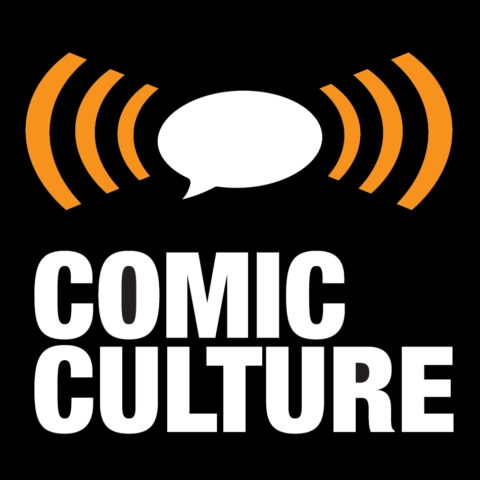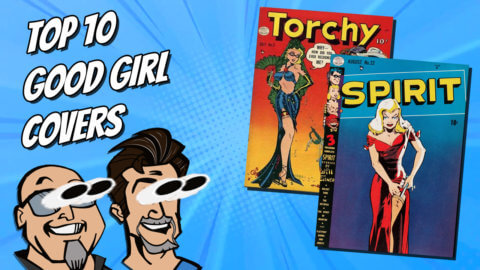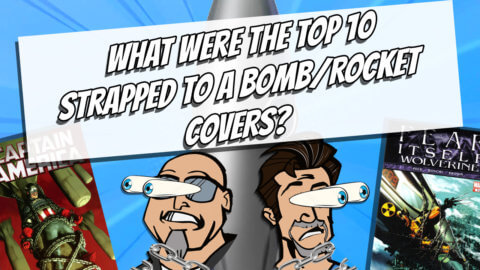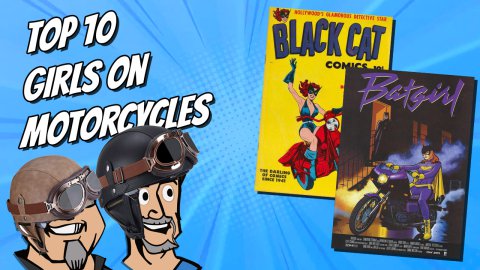This week Chris and Walt talk about comic books that have been very important over the history of the medium.
Please let us know what you thought of the show and don’t be afraid to leave a comment down in the comments field just please keep it civil.
Which books did we leave out?
Listen on Apple Podcasts, Google Podcasts





Valiant launched its first titles in 1991, Magnus and Solar. Image launched in 1992 with Spawn. If you’re going for quality paper, colour and printing I’d credit Marvel Fanfare in 1982 and its use of Baxter paper.
Akira received a lot of attention because it came from Epic Comics in 1988. Lone Wolf & Cub launched in 1987 from First Comics with Frank Miller covers. The only two manga series I read during that period.
North American comics are a drop in the bucket of comics popularity in the world. Manga is a huge market, as is bande dessinée, both with much larger readerships than anything produced here.
Two important comics that relate to today’s market. Batman: Legends Of The Dark Knight launched with four covers over the normal cover, a major publisher cashing in on collectors wanting every cover. Marvel Contest Of Champions was the first mini-series and it’s hard to imagine current comics without the mini-series.
Scott clearly tolerates you two. I am scared to comment after his erudite thoughts, but I will go ahead. You should do a sequel and let him talk. He knows this stuff. I read both Lone Wolf & Cub and Akira and I liked the former a lot more. I think I would agree with Chris that the movies had a lot more impact on driving North America to anime/manga than did these translations.
My first comment wasn’t about covers, but that coffee drinking will help with that mule thing. South American synergy.
There was a linkage in your picks that emerged:
EC -> Code -> moribund comics -> Showcase #4 -> FF #1
I think this is possibly THE great story of comics, and drives my collecting toward the period when comics were under the gun, generally destroyed, and hence are now scarce.
I liked most of your picks more or less, although I doubt we’d be talking about Black Panther if it wasn’t for Chadwick Boseman and Disney. FF #52 was an important step, but without the movie I think we’d view it as more evolutionary. I didn’t like the Spawn #1 pick initially but it has grown on me. I think Superman #75 might be off – yes it generated a lot of press at the time, but I don’t think it really changed anything – everybody knew who Superman was, and many/most people viewed it (rightly) as just a publicity stunt. I think The Dark Knight Returns #1 is far more important. This also got mainstream press coverage, and the impact fundamentally changed the Batman property and people’s perception of the DC Universe.
Here are some more:
Detective #327 – maybe call this “The Dark Knight Reawakens”. A very early step both towards more “adult” comics, and the emergence of a fully-baked DC Universe.
ASM #98 and Green Lantern #85 – far before your DD #168 (you have a way too soft spot for DD in this period), these pushed the boundaries with the heroin stories; DC clearly pushed further with the extraordinary #85 cover, but played ball with the Authority to get approval, while Marvel went for shock value by eschewing approval. When I was a kid these were super-controversial books and really pushed comics towards being a “relevant” medium.
FF #48 and (I really hate to mention this book, because I am still hoping to get a 9.8), Superman’s Pal Jimmy Olsen #133. I think these stand out as the key starting points for Cosmic Marvel and Cosmic DC respectively. The price discrepancy between these (both Kirby) books is scandalous. People might want to point at SPJO #134 or Forever People #1, but the start of all that came after is #133.
Star Wars #1 – we all would be living in a very different world if Marvel hadn’t published this book. All of our collections might now be worthless and a footnote in history, for one thing. I think it has to rank with Action #1 and Detective #27 in terms of importance (but of course not in terms of scarcity).
Hi Scott. I recall Marvel Fanfare. I never liked its color or Baxter paper. It didn’t feel comicy to me. The title was to be a revelation…the top writer and artists writing stories of the various Marvel characters. I dont think it became the Brave and the Bold or the Showcase of its time. Its been in the $1 bins pretty much since its inception. But I did appreciate Jim Shooter and company trying.
I like the Blank Panther Chris. I was so excited when he got his own book in Jungle tales. But I am disapointed ,failure to recognize,the first Black Panther characters were created in an Australian comic book and in the UK’s black and white Tarzan adventures circa 1957. Stan was nothing, if not a great copy panther…I mean Cat .
https://d1466nnw0ex81e.cloudfront.net/n_iv/600/1138297.jpg
https://external-content.duckduckgo.com/iu/?u=https%3A%2F%2Fcomicvine1.cbsistatic.com%2Fuploads%2Fscale_small%2F0%2F3125%2F4868357-tar9.16.jpg&f=1&nofb=1
And in fairness…Jack Kirby ,may have been as much to blame ,in this character development. We know both of Jacks versions had a full mask and a half mask. Exactly what already existed in the medium for years previous. Or, maybe there are only so many ways you can make a Black Panther character….
I’m pretty sure Youngblood was first to hit the stands, but only by a week, if not a month… so it’s a moot point. I’m not sure what “Baxter” paper is… During my 30 years in design, I’ve never come across it from any of the paper distributors, both here or in Asia. My guess is that it’s a hot press derivative of cartridge paper, which was the preferred choice during grade school art class. This paper was the impetus, at least in part, to restart the New Teen Titans and the Legion of Super-Heroes as a premium line of books, on par with Epic, Fanfare, Camelot 3000… which in turn was an excuse to jack up prices, in the same way that the current card stock variants costs a $1 more than the regular cover… the idea is to get you use to the higher price as a premium offering before making it the standard. Sneaky? Yes. But also clever.
I know people here don’t really care about art outside the main superhero publishers, but it would have been interesting to expand the discussion farther back into art history in terms of milestones. From cave paintings to Egyptian scrolls to Roman relief sculptures to Norman Rockwell… the idea of sequence or the passing of time as a form of visual communication can be considered a richer way of transmitting our message into the future. The comic book medium is but a couple of footprints in the long human journey. And even though most folks here don’t like the current material, from an anthropological perspective… it does speak to our present values. And it gets super interesting when we compared to the early days of comics, or even farther back preprint. For example… was Jesus a superhero for the times?
I also was also thinking Lone Wolf and Cub! I like the way you thought about the important steps… a couple I wouldn’t have thought of. Since your talking after Action 1… I would have to say Captain America 1 would be a milestone. It ushered in the really dynamic war covers that fueled the new popularity of superheroes across many publishing houses for several years! I would also site Four Color 178… the first appearance of Scrooge McDuck 1947, a character that is iconic in the World of Disney.
Since I work graveyard shift… I wake hours after my wife has made the coffee and I always drink it cold and black.
I could actually hear the sigh before I started reading Scotts reply, I’m sure we serve as some sort of penance for the man.
Excellent and worthy add ons from Scott and Meli, though I’ll question the weight Meli is putting on Star Wars #1.
Dave the FF Panther was the 1st to break through and stick, we went that route.
Charlie, I feel like I need to be into my second flagon of wine before I attempt an answer.
Gerald, you gotta learn how to use that coffee maker!!
Of interest, and speaking of Baxter paper, here’s a glimpse into how comics are printed. Web printing have come a long way and can rival sheet printing for most commercial purposes. You’re also limited to whatever paper choices are available in those big roles, which usually is very cheap grade, even if the gloss of new books makes it look like quality paper. Also, do the workers understand that we are expecting 9.8’s? ^_^
https://www.youtube.com/watch?v=LOKsk0y40VY
I’m with Chris on Spawn #1, as a young man who’d been collecting only a few years Spawn was a monumental jump in production values to me! The excitement it generated was palpable, unfortunately then the whole industry went nuts and drove off the cliff!
Black Panther, completely agree, also Don McGregor’s Panther’s Rage arc in Jungle Action was possibly the grandfather of the graphic novel, so I thought that might get a mention in here.
…and I suspect you deliberately left out O’neil’s Green Lantern run just to upset Chris Meli
Hi Charlie. I suspect Jesus, Hercules,Sinbad, Samson ,Apollo et al were all superheros of some sort. Maybe some were real, like Audie Murphy or others were fictional myths.
Don McGregors Panthers rage was above my abilities at the time, but I loved it anyways Spider. I thought Spawn was lovely to look at, but the stories didn’t draw me in.
I disagree with Walt. Those Panthers broke thru and were enjoyed by other cultures and readership’s for years. (Panther (Australian 1957-1963)Their popularity rivaled Jungle Action and the first few volumes of Black Panther. Proof-As Marvels Black Panther was relinquished in 1$ bins for years, his appearances in comics were cheap, only to be brought back to life , 45 years later,when the Panther movie delighted so many.
Marvel comics wasn’t the only inventor of great comics, and clearly were inspired by others in the medium, here and in the rest of the world. Remember Walt, you said History of the Medium.
https://external-content.duckduckgo.com/iu/?u=https%3A%2F%2Fcomicvine1.cbsistatic.com%2Fuploads%2Fscale_small%2F0%2F3125%2F3938677-pan1.jpg&f=1&nofb=1
https://external-content.duckduckgo.com/iu/?u=https%3A%2F%2Fimages.squarespace-cdn.com%2Fcontent%2Fv1%2F53d2f5f2e4b009befdb5fc0c%2F1479158410186-2FP01V99604O00E3EGQL%2Fke17ZwdGBToddI8pDm48kCRgbd7287MXAmXd86SjEnoUqsxRUqqbr1mOJYKfIPR7LoDQ9mXPOjoJoqy81S2I8GRo6ASst2s6pLvNAu_PZdKa32tWeiHlKwj26AgJph2ZjlvtOyeWzjZEQoRehgbLdzdrNBK-AKLoLizggra0gag%2Fimage-asset.jpeg&f=1&nofb=1
Just for fun… here’s an art/production/colour theory trivia question. If…
C = Cyan
M = Magenta
Y = Yellow
What and why is “K”?
Bonus question. What is RGB?
No Googling. Depending on your source, the answer may be wrong.
Let’s keep going… what is the difference between CMYK and RGB?
Charlie; CMYK has 4 letters and RGB only has 3
BUT!!! Both sound like departments of espionage over in Russia during the cold war
Do I get a prize?
A keen observation Spider. You’re not wrong, but think colour theory.
I used to work in the video and print fields prior to retirement so this is easy.
In the video world, colour is considered light and so your blank background was black, hence the absence of light. As you added colour, or your lightening agents, you would end up with white, hence the existance of full light or full colour mixed together. Prior to vga, pc monitors were called RGB. You could spin an onscreen colour wheel of Red-Green-Blue and get a white screen.
In the print world, colours are considered darkening agents, so your empty palette would be white, hence the absence of dark. A fully coloured palette would be black, or your ‘Key’ colour, the K in CMYK, with Cyan-blue, Magenta-red and Y-yellow as your darkening agents. The colour black is considered the absence of light.
A very interesting response Klaus. To be honest, I’m not sure I follow the explanation… but you are hitting all the notes by referencing the terms I was looking for. In particular… K = Key.
In astronomy, we can’t visit or see distant stars, but scientists have a sense of the possibilities by examining the very small pin point of light in the sky. Different material emit different frequencies on the light spectrum. These frequencies can be converted to form sound for the radio, or at the extreme ends… gamma radiation can turn you into a big green monster according to Stan Lee and Jack Kirby or give you super powers if exposed to cosmic rays in outer space:
https://files.mtstatic.com/site_4334/12507/0?Expires=1635693494&Signature=KxXzicsmTCZc4MXwCTLbq3mtTWgNbq7xgddfWTScWs4P1whl9vKHkHdXj1~0gzUQHMRpzc5iY1ePH7kaGJwhZZS4f7Zq5eyWYpU55hqfVfZXFRn56IB0uAKmFExanQk-jQSxPGgDNHFH7SsEsQ8kVr7a6QiMLKyJ5aYow71SA6M_&Key-Pair-Id=APKAJ5Y6AV4GI7A555NA
In short, our knowledge of the universe is based on light. We tend to rely our sense of sight the most, so the observable universe is also heavily dependant on light. Everything that we see is a reflection of light, or direct light. Unfortunately, our eyes can only detect a very narrow band of light on the electro magnetic spectrum. So when it comes to colour theory in art, print or broadcast, we’re mainly dealing with the visible spectrum.
It’s fascinating to think that colour does not inherently exist. Whether its the printed page or human skin, we see different colours because of how the different materials (pigment) reflects light.
• CMY refers to the primary colours. All colours are a combination of cyan, magenta and yellow.
• This is a SUBTRACTIVE colour system since it’s based on pigments that absorb certain parts of the light spectrum, which in turn reflects orange, purple or what have you.
• When painting, you can mix the primary colour to get the colour you want. When printing, multi colour is an illusion is created by combing very small dots of cyan, magenta or yellow by way of screens. Take a very close look at comics or a magazine and you’ll see that the pictures are made of small dots of C, M and Y.
• In theory, combining CMY is supposed to give you a dark colour. But in practice, you end up with brown, which is not dark enough to give an image the rich depth and definition it requires.
• Thus, black is added or “keyed” in the final pass to extend it’s visual range.
The word I was looking for is “Key”, because many folks who don’t understand production seem to think that “K” refers to last letter from blacK, citing that “B” is not used as to avoid confusion with BLUE. This rationale makes no sense, but “key” is a production term so it’s understandable why some artistic types would not know this.
https://www.printplace.com/blog/wp-content/uploads/2017/04/Why-Printing-Uses-CMYK-Image-5.jpg
• RGB refers to the primary colours of light… red, green, blue.
• This is an ADDITIVE colour system since the other colours are created by adding or combing the 3 main frequencies of red, green or blue.
• Combine all 3 and you get white light. Turn off all 3 and you get black… or darkness.
This is why watching too much TV was considered bad for you eyes… because those cathode rays were being zapped directly at your eyes. Today, the new monitors are based on pixels which are made up of RGB lights that flicker in various combinations that create the illusion of a full coloured image.
https://c2.staticflickr.com/6/5054/5486434925_b1882bbbf3_b.jpg
You can also get very technical and arrange the pixels in different size, shape and formation to achieve varying degrees of sharpness. The optimized sharpness would be beneficial when staring at your phone… but not so much when watching your TV.
Thanks for playing ^_^
“It’s fascinating to think that colour does not inherently exist.” I think an understatement as this issue is a key example in arguments about consciousness. The experience of color (as we would say in The Greatest Country On Earth) is nearly universal to humans, and yet we have no explanation for this experience. Yes of course we can talk about photon wavelength, conversion to optical nerve impulses, etc., but none of that speaks directly to our experience of red versus blue.
My experience of the colors of FF #1 and XM #1 is still that I want to see deep greens, or there is no way I could shell out those five figures.
If you’re saying what I think you’re saying Chris, I’m glad you picked up on that.
In the same way that Geordi La Forge from Star Trek Next Gen could see a wider spectrum of light… If we had this ability, we would be able to see so much more:
https://youtu.be/t2PoPh2B9qo?t=14
This also helps to explain all those fantastical images of space from NASA. On one hand, you could argue that those images are misleading since space does not look like that… But if you consider light frequencies as information that can be captured and combined in various ways… the result is a dramatic reveal of things that exist, but can’t be seen by the naked eye. I couldn’t find any good examples but Vox vid sums it up nicely:
https://www.youtube.com/watch?v=WSG0MnmUsEY
And if you wanna get really crazy… You could extrapolate that our very existence is a frequency. So if you believe in different spectral plains… ghosts may be a result of one plain intersecting another. So, space/time is not just infinite in terms of physical distance… but depth, or plains of existence. A multiverse of realities occupying the same physical space. Or perhaps you think I’ve read one too many comics? Well… theoretical physics is a legitimate area of study, but it’s way beyond my comprehension, so it could be I’m mixing things up ^_^
I think things are good deal weirder than even that. What does “physical space” actually mean? And I will argue for some legitimacy in this area, although not at the level of Sheldon.
Boys, Boys Boys! FF #1 – kids aren’t wearing any Mr. Fantastic pyjamas or Invisible Girl underwear these days. FF lasted for about 100 issues and faded after Jack left Marvel. Spiderman #1, on the other hand, laid the foundations of a comic book dynasty as Spidey rose to become I of only 4 characters able to appear in up to 10 books a month – Superman, Batman, X-Men and Peter Parker.
The undergrounds sustained a horror art trend that still continues today – from Graham Ingels to S. Clay Wilson to Frank Miller to Zack Snyder are short steps. The undergrounds specialized in body horror as well as sex, drugs and rock ‘n roll. And their political satire has never been surpassed.
Spawn #1 was Todd’s improvement on a ‘creepy’ Ditkoish Spiderman that he developed at Marvel when he transformed Spider-Man away from the ‘cute’ – John Romita, Jim Mooney, Mark Bagley, etc. – that sold so many blanket sets and lunch boxes.
Has there not been 1 book in the 2000s considered important or game-changing? Cooke’s The New Frontier, Brubaker’s Captain America, Morrison’s Batman or Francavilla’s Afterlife with Archie?
Thanks for listening